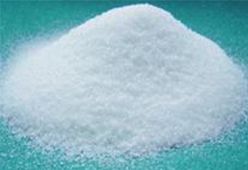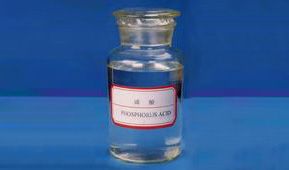Product center

Your location: Home - ProductsProducts

Guizhou SINO-PHOS Chemical Co., Ltd. can supply phosphoric acid, sodium tripolyphosphate, sodium hexametaphosphate, sodium tripophosphate, sodium pyrophosphate, etc. with the best quality and the most favorable price, 20,000-50,000 tons per month. For 18 years, it has focused on the research, development and production of phosphoric acid and phosphates. The company has a complete phosphating and phosphating production line, which can provide customers with a full-process production and quality assurance chain. Our products are widely used in DAP, SSP, TSP, MAP, NPK fertilizers and DCP, MDCP, TCP feed additives and other fertilizer industries in Senegal,Rwanda,Laos,British Virgin Islands,Latvia,Vietnam and other countries.
| Classification | Phosphoric Acid |
| Place of Origin | Guizhou, China |
| Other Names | PA 85% |
| MF | 00 |
| EINECS No. | 200-662-2 |
| Grade Standard | Industrial Grade |
| Appearance | white powder |
| Application | Chemical additives and cleaning |
| Brand Name | SINO-PHOS |
| Model Number | zy |
| Product name | phosphoric acid |
| Grade | Industrail Grade |
| Packaging Details | 22kg/bag 42bag/pellet |
| Supply Ability | 97725 Metric Ton/Metric Tons per Week |
| Quantity (metric tons) | > 95195 |
| Lead time (days) | 14 |



titration phosphoric acid bearings FAQs Guide titration phosphoric acid is a colorless, odorless inorganic acid with the chemical formula H3PO4. It has a wide range of uses in various industries, including food and beverage, fertilizer production, and industrial cleaning. As a food additive, it is commonly used as a flavor enhancer and preservative. In fertilizer production, it serves as a source of phosphorous, an essential nutrient for plant growth. In industrial cleaning, it is used as an effective descaler for metal surfaces. Highly versatile and effective, titration phosphoric acid is a vital ingredient in many products and processes.
2.Can titration phosphoric acid be used in the treatment of osteoporosis?
3.What is the role of titration phosphoric acid as a buffer?
4.Is titration phosphoric acid harmful to the environment?
5.What is titration phosphoric acid poisoning?
6.What is the chemical formula for titration phosphoric acid?
7.What compounds are produced when titration phosphoric acid reacts with metals?
8.How should titration phosphoric acid be stored?
9.What does the reaction of titration phosphoric acid with water produce?
10.Is titration phosphoric acid biodegradable?
11.20. What chemical products can titration phosphoric acid be used to make?
12.What safety issues does titration phosphoric acid cause?
13.What is the role of titration phosphoric acid in fertilizers?
14.How is titration phosphoric acid used in the production of detergents?
1.Can titration phosphoric acid be used as a cleaning agent?
Yes, phosphoric acid is commonly used as a cleaning agent due to its ability to dissolve mineral deposits and rust. It is often used to clean metal surfaces, such as sinks and bathtubs.
2.Can titration phosphoric acid be used in the treatment of osteoporosis?
Phosphoric acid has been studied as a potential treatment for osteoporosis, a condition in which bones become weak and brittle. It is believed that the acid can help in the absorption of calcium and prevent bone loss. However, further research is needed to confirm its effectiveness in treating this condition.
3.What is the role of titration phosphoric acid as a buffer?
Our titration phosphoric acid products undergo strict quality control to ensure customer satisfaction.
Phosphoric acid is a weak acid that can act as a buffer in a solution. A buffer is a substance that helps maintain the pH of a solution by resisting changes in its acidity or basicity. Phosphoric acid can act as a buffer in two ways:
1. As a weak acid: When added to a solution, phosphoric acid can donate a proton (H+) to neutralize any excess hydroxide ions (OH-) present, thereby preventing the solution from becoming too basic.
2. As a salt: Phosphoric acid can also form salts with other ions present in the solution, such as sodium or potassium ions. These salts can act as a reservoir of protons, which can be released or absorbed to maintain the pH of the solution.

4.Is titration phosphoric acid harmful to the environment?
We enjoy high authority and influence in the industry and continue to innovate products and service models.
Phosphoric acid can be harmful to the environment if it is released into the environment in large quantities. It is considered a hazardous substance and can cause harm to aquatic life if it enters water bodies. It can also contribute to acid rain and damage soil and vegetation if it is released into the air.
Additionally, the production of phosphoric acid can also have negative impacts on the environment, such as air and water pollution, and the depletion of natural resources. Proper handling and disposal of phosphoric acid are important to minimize its potential harm to the environment.
5.What is titration phosphoric acid poisoning?
We are a professional titration phosphoric acid company dedicated to providing high quality products and services.
Phosphoric acid poisoning occurs when a person ingests or comes into contact with a toxic amount of phosphoric acid. This can happen through accidental ingestion of a household cleaning product containing phosphoric acid, or through occupational exposure in industries that use phosphoric acid in manufacturing processes. Symptoms of phosphoric acid poisoning may include irritation and burning of the mouth, throat, and stomach, difficulty breathing, low blood pressure, and damage to the digestive tract. In severe cases, it can lead to organ failure and death. Treatment for phosphoric acid poisoning may include supportive care, such as administering fluids and medications to manage symptoms, and in some cases, the use of antidotes to neutralize the acid. It is important to seek immediate medical attention if phosphoric acid poisoning is suspected.
6.What is the chemical formula for titration phosphoric acid?
The chemical formula for phosphoric acid is H₃PO₄. This means that each molecule of phosphoric acid contains three atoms of hydrogen, one atom of phosphorus, and four atoms of oxygen.

7.What compounds are produced when titration phosphoric acid reacts with metals?
Our products & services cover a wide range of areas and meet the needs of different fields.
The compounds produced when phosphoric acid reacts with metals depend on the specific metal being used. Generally, the reaction produces a salt and hydrogen gas. For example:
1. Phosphoric acid + iron → iron phosphate + hydrogen gas
2. Phosphoric acid + magnesium → magnesium phosphate + hydrogen gas
3. Phosphoric acid + zinc → zinc phosphate + hydrogen gas
In all cases, the hydrogen gas is released as a byproduct of the reaction. The resulting salt, such as iron phosphate or magnesium phosphate, will depend on the specific metal used.
8.How should titration phosphoric acid be stored?
Phosphoric acid should be stored in a cool, dry, and well-ventilated area, away from direct sunlight and sources of heat. It should also be stored separately from other chemicals to avoid any potential reactions.
9.What does the reaction of titration phosphoric acid with water produce?
The reaction of phosphoric acid (H3PO4) with water (H2O) produces a solution of phosphoric acid in water. This solution is acidic and contains H+ ions from the dissociation of the acid. The reaction can be represented by the following equation:
H3PO4 + H2O → H+ + H2PO4- + H2O
The H+ ions combine with water molecules to form hydronium ions (H3O+), which give the solution its acidic properties. The H2PO4- ions also contribute to the acidity of the solution. Overall, the reaction produces a solution that is highly acidic and can be used in various industrial and laboratory applications.

10.Is titration phosphoric acid biodegradable?
We have established long-term and stable partnerships with our suppliers, so we have great advantages in price and cost and quality assurance.
No, phosphoric acid is not biodegradable. It is a strong acid and does not break down easily in the environment. It can be diluted and neutralized, but it will still persist in the environment for a long time.
11.20. What chemical products can titration phosphoric acid be used to make?
We continuously upgrade our skills and knowledge to adapt to changing titration phosphoric acid market needs.
Phosphoric acid can be used to make fertilizers, detergents, food additives, water treatment chemicals, and industrial chemicals such as phosphates, phosphonates, and phosphoric esters. It is also used in the production of animal feed, pharmaceuticals, and metal surface treatment.
12.What safety issues does titration phosphoric acid cause?
We have a first -class management team, and we pay attention to teamwork to achieve common goals.
Phosphoric acid is a chemical compound commonly used in the production of fertilizers, detergents, and food additives. However, it can also pose significant safety hazards if mishandled or ingested. One of the main concerns with phosphoric acid is its corrosive nature, which can cause severe burns if it comes into contact with the skin or eyes. Inhaling its vapors can also irritate the respiratory system and lead to breathing difficulties. Furthermore, if ingested in high concentrations, it can cause digestive problems and potentially lead to organ damage. Taking appropriate precautions and following safety guidelines when handling phosphoric acid is crucial to minimize potential health risks.

13.What is the role of titration phosphoric acid in fertilizers?
Phosphoric acid is a major component in the production of fertilizers, as it provides a source of phosphorus, an essential nutrient for plant growth. It helps promote root development, increases nutrient uptake, and improves the overall quality of crops.
14.How is titration phosphoric acid used in the production of detergents?
Phosphoric acid is used in detergents as a cleaning agent, as it can effectively remove mineral deposits and prevent rust and corrosion. It also acts as a pH adjuster, helping to maintain the desired pH level of the detergent.

